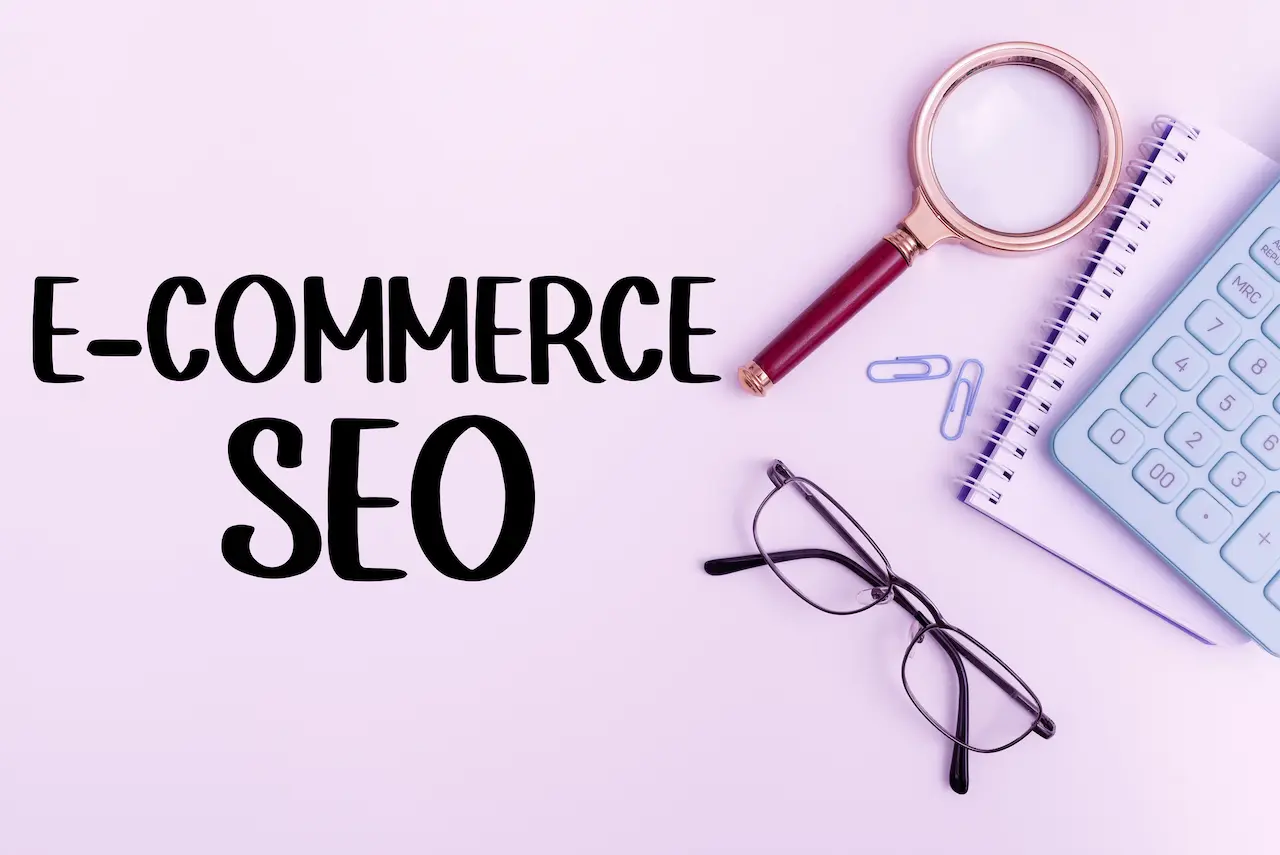4 Tips For Successful SEO of Your E-commerce Site
E-commerce SEO has become increasingly important for online businesses. Well-structured SEO strategies can help to increase organic visibility and outrank your competitors, attracting new customers via search engines such as Google. Effective SEO strategies are essential to success as e-commerce grows and competition increases.
Table of Contents
ToggleThe Importance Of E-commerce SEO
Organic traffic accounts for 33% of all traffic on eCommerce sites. Businesses must invest in an SEO strategy. SEO-focused companies not only increase their visibility on search engines, but also improve the user experience. This leads to a higher conversion rate.
Many e-commerce sites use SEO to some extent, either by their teams or through external agencies. Success often depends on the expertise and dedication to the optimization process. Businesses that treat SEO as an integral part of their marketing plan are more likely to attract organic traffic.
Only a handful of agencies specialize in e-commerce. While many SEO companies offer services, few are experts. OuterBox, a pioneer of this field, has gained unparalleled expertise by working with online retailers over the years to improve their rankings, traffic and revenue. Our passion for eCommerce SEO motivates us to constantly refine our strategies.
This guide will help you make informed decisions about your eCommerce store by exploring essential eCommerce SEO strategies such as keyword research, on-page optimisation, technical SEO and link building.
Understanding Keywords
Keywords are search queries that users enter in search engines. Keywords can be different in terms of length, specificity and intent. Keywords such as “guitars”, “guitars on sale”, and “used 1970s Gibson Guitars for Sale” are all relevant keywords for an online guitar shop. To maximize your relevance, it’s important to align your keyword with your product offering.

Keywords Types
- Short-tail keywords are usually one- or two-word phrases with high search volume and fierce competition. As an example, “shoes”, a very competitive short-tail keyword, is “shoes”.
- Long Tail Keywords: These are longer and more specific phrases with lower competition. Long-tail keywords can make it easier to rank, and they often indicate a stronger purchase intent.
- Branded keywords: These include names of specific brands. As an example, “Nike Air Max, targets users who are specifically searching for Nike products.
- Transactional keywords These ke: These keywords indicate a user’s readiness to purchase a product, for example, “buy”, “for sale” or specific product names.
- Informational keyword: These keywords are used by users to search for information, not products. Informational queries include “how to clean your running shoes”.
Creating your Keyword List
A robust keyword list will be the foundation of any successful SEO campaign. Start by identifying keywords that you would like to rank and understanding the relevance of those keywords to your offering. For your most important product and category pages, choose a primary keyword as well as several supporting keywords.
Keyword Research Tools
- Google Keyword Planner. This free tool gives you insights into the search volume, competition and related keywords.
- Ahrefs: Provides detailed data on keyword performance and related keywords.
- SEMRush is A comprehensive tool that provides keyword data and competitor insights.
- Keywords Everywhere is a browser extension that displays keyword metrics directly within your search results.
- Answer the Public is a unique tool that visualizes questions and prepositions about a keyword.
- LSI Graph: Identifies Latent Semantic Indexing keywords (LSI), which are related terms, that can improve content relevance.
The process of gathering keywords for your online store can become overwhelming, especially if there are many products and categories. This data can be compiled into lists for ongoing research and better strategy development.
Understanding Search Intent
The search intent is what drives a user’s question. It can appear in many different ways.
- Navigational intent: User is searching for a particular website.
- Intent to Inform: User is seeking information or answers.
- Intent to Transact: User intends to purchase a product.
It is important to understand the intention behind keywords to target effectively. If someone searches “used guitarists for sale,” it is likely that they are ready to buy, while “used Guitars” could indicate a general interest.
Identification of eCommerce Intent
Focus on identifying keywords that have a clear eCommerce intention to build a solid eCommerce SEO strategy. The indicators include:
- Product SKUs: A user who searches for a particular SKU is likely to be looking to buy.
- Dimensions/Sizes: Keywords that specify dimensions or quantities indicate an intent to purchase.
- Branded searches: Searches that include well-known brands can indicate a greater likelihood of purchase.

Keyword Research: the Foundation of Your SEO Strategy
Keyword research is the foundation of a successful SEO campaign. This list will help you with your marketing strategy, content creation and on-page optimization.
Continuous Research
Researching keywords isn’t a one-time job. Research is important as you add products and pages to the store. Google Keyword Planner, SEMRush and other tools can help you monitor changes in search trends to discover new opportunities.
Multi-Tooling
Use multiple tools to cross-reference data. Comparing data from different tools can reveal hidden opportunities. If Ahrefs indicates high volume but low competition for a particular keyword, this could be an opportunity worth targeting.
On-Page Search Engine Optimization Best Practices
It’s now time to integrate your targeted keywords into the structure of your website. On-page SEO is a process of optimizing different elements to increase search engine rankings.
The Key Elements for Optimisation
- Title tags: Include the primary keyword in your title tag. To ensure that it appears correctly in search results, keep the title tag to 60 characters or less.
- Meta descriptions: Create compelling meta descriptions that include your keywords and encourage users to click. Keep them to under 160 characters.
- Header tags: Use the H1, H2, H3, and H4 tags to organize your content logically. The H1 tag should contain your primary keyword, while H2s and other tags can include secondary keywords.
- Product descriptions: Create a unique, detailed product description that includes your target keywords. Avoid duplicate content across product pages.
- Image alt text: Include keywords in the alt texts to optimize images. This is not only good for SEO, but it also makes your website more accessible.
- URL structure: Use descriptive, clean URLs with relevant keywords. For example, use “/nike-air-max-shoes” instead of “/product12345.”
- Internal Linking: Links to other pages on your website that are relevant to the user’s journey.
Tech SEO
Technical SEO is crucial for ensuring that your site can be easily crawled and offers a great user experience.
Key Technical Elements
- Site speed: Optimize the loading speed of your website. Slow sites can cause higher bounce rates and hurt rankings. You can identify improvement areas using tools such as Google PageSpeed Insights.
- Mobile Optimization: Make sure your site is mobile-friendly. Responsive design is crucial for customers to stay loyal.
- Secure Site (HTTPS). A secure website is important for user confidence and can have a positive impact on rankings.
- XML-Sitemap: Create an XML-sitemap and submit it to search engines so they can index your pages better.
- Robots.txt Use a robots.txt to control which pages should be crawled by search engines. This will ensure important content is indexed while avoiding low-value or duplicate pages.
Link Building Strategies
Link building is an important aspect of SEO. High-quality links signal trustworthiness and authority to search engines.
Effective Link Building Techniques
- Guest blogging: Create guest blogs for websites that are reputable in your field. Include links to your website to increase referral traffic and authority.
- Influencer collaborations: Partner up with influencers aligned with your brand and gain exposure from their platforms.
- Content marketing: Create shareable, high-quality content that attracts natural backlinks. Infographics, guides on how to do things, and comprehensive reports about the industry are all examples.
- Submissions to Online Directories: Submit your eCommerce website in reputable online directories to increase visibility and gain backlinks.
- Broken Link Building: Identify broken links in other websites that are related to your products. Contact webmasters and suggest that broken links be replaced with links to relevant content.
Content Marketing and SEO
Content marketing is a great way to complement your SEO strategy. It provides valuable information and attracts customers. You can build your brand authority and drive organic traffic by creating content that resonates well with your audience.
What type of content do I create?
- Blog Posts: Write informative articles to address common questions and problems related to your product. Use keywords in your content naturally.
- How to: GuHow-toCreate step by step guides for your products. It not only adds value, but it can also increase traffic via informational searches.
- Videos: Create video content to showcase your products or provide tutorials. Videos are a great way to engage users, and they’re often featured in search results.
- Testimonials Share testimonials and reviews from happy customers to encourage conversions and build trust.
- Social media content: Use social media platforms to engage your audience and promote your content, driving traffic to your website.

Conclusion
The success of your eCommerce SEO strategy depends on it
Focus on thorough keyword research, technical and on-page optimization, and an aggressive link-building strategy. You can improve your organic visibility by understanding search intent, optimizing your site and content continuously and analyzing your keyword research.
These strategies can help you increase your revenue, attract more customers and outrank your competitors. Keep up to date with SEO best practices. Be flexible and adapt your strategy as search trends change in an ever-changing digital environment.
By committing to the best practices listed above, your eCommerce website can flourish in 202 and beyond. SEO is a powerful tool that will help you achieve sustainable growth.




